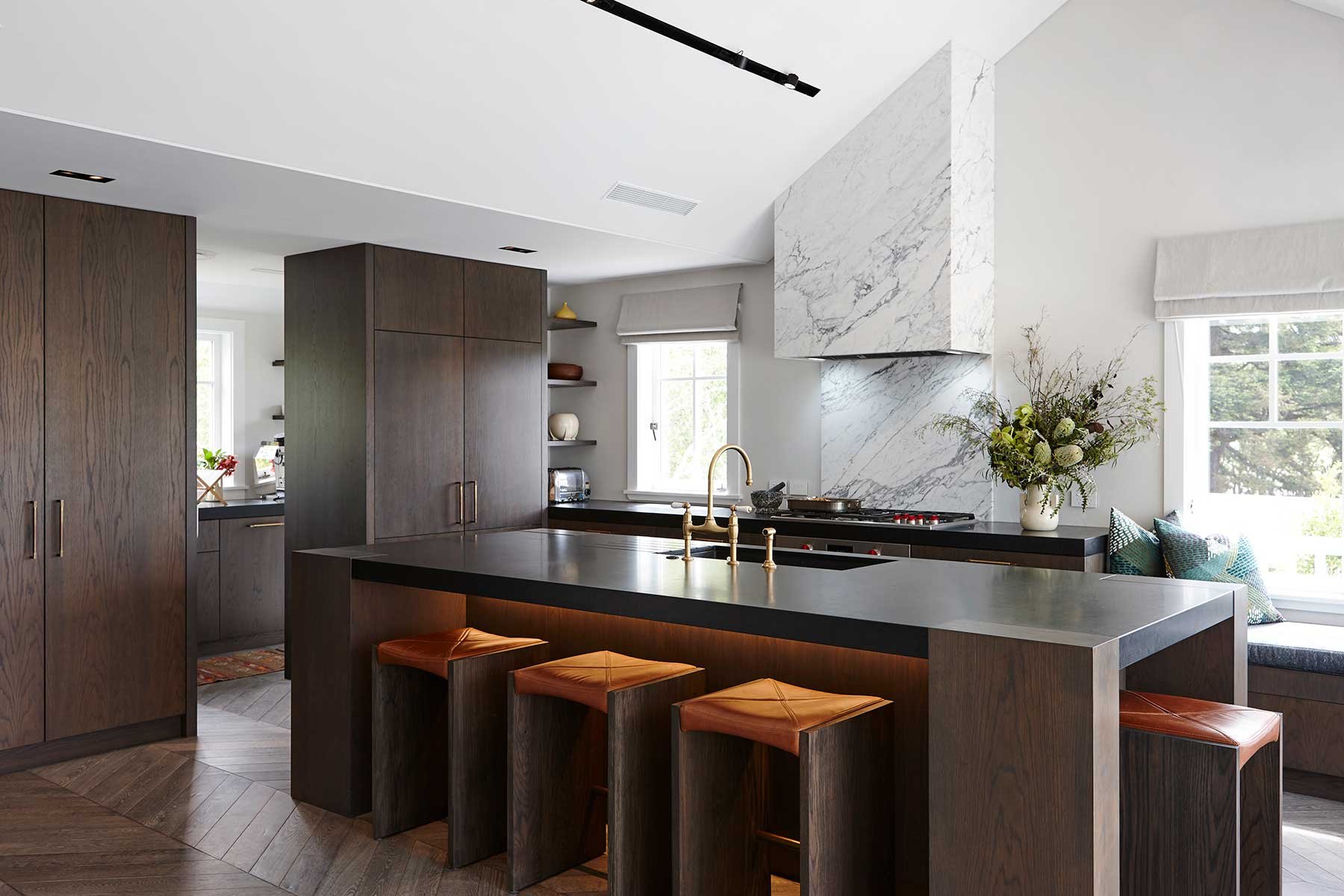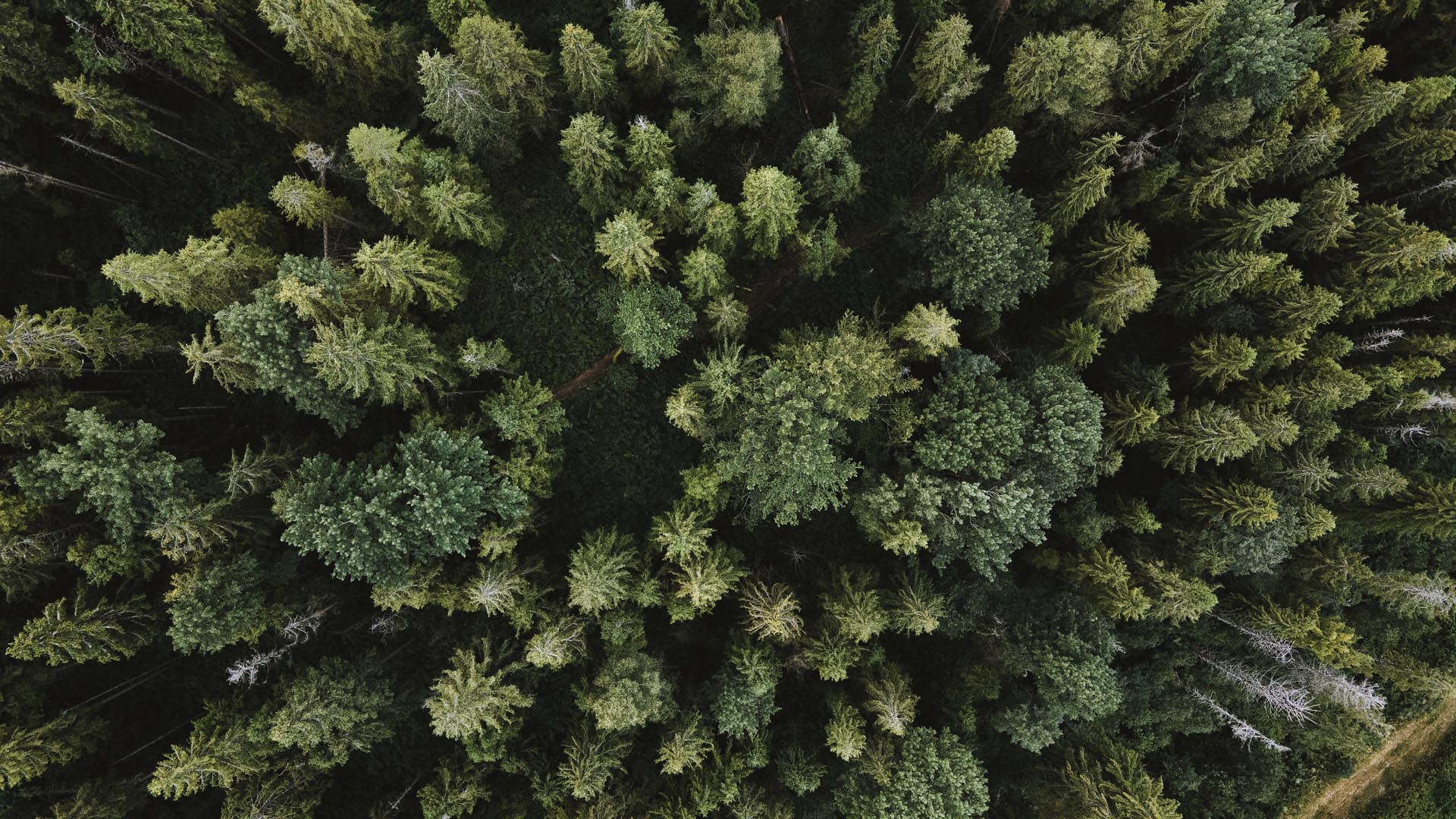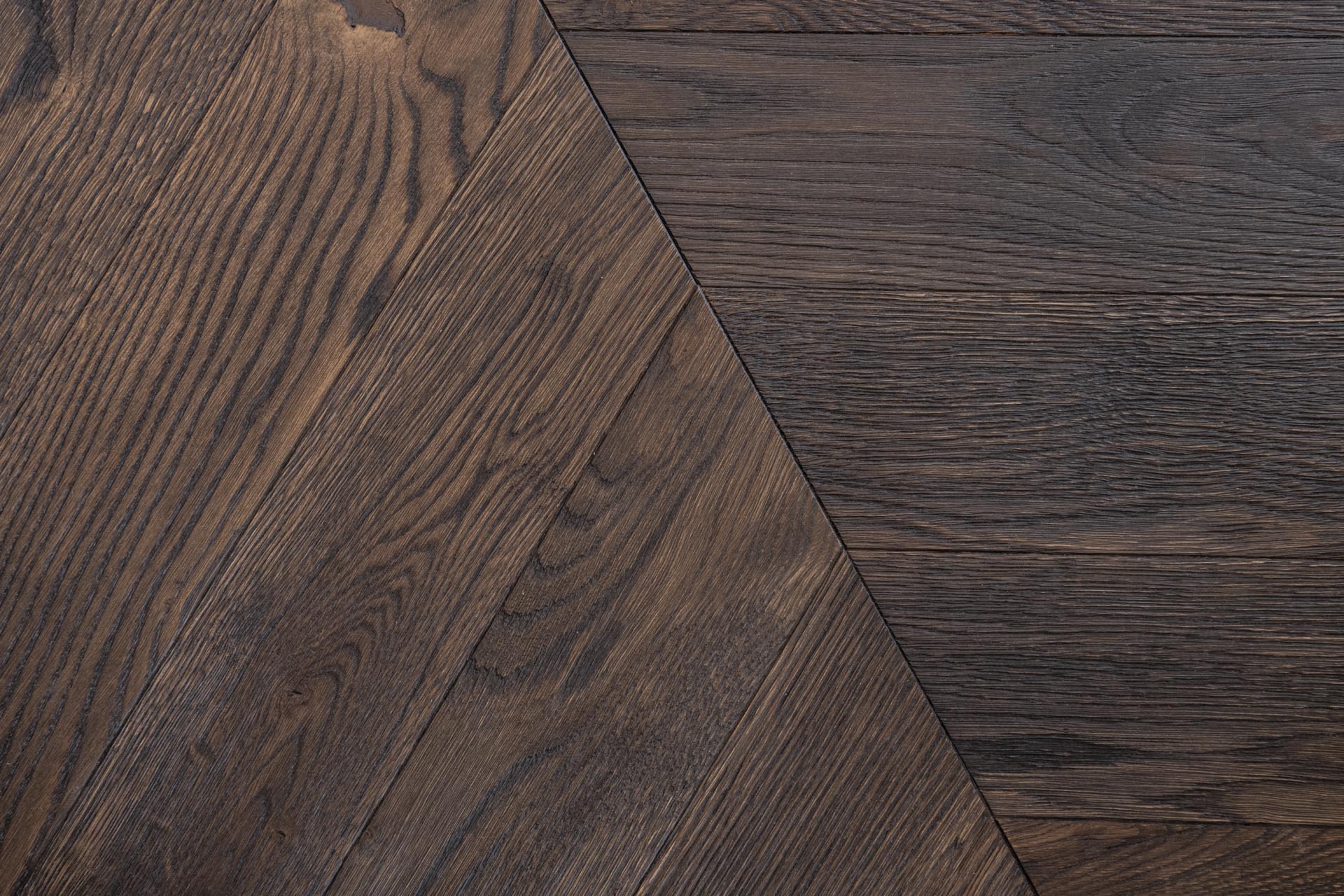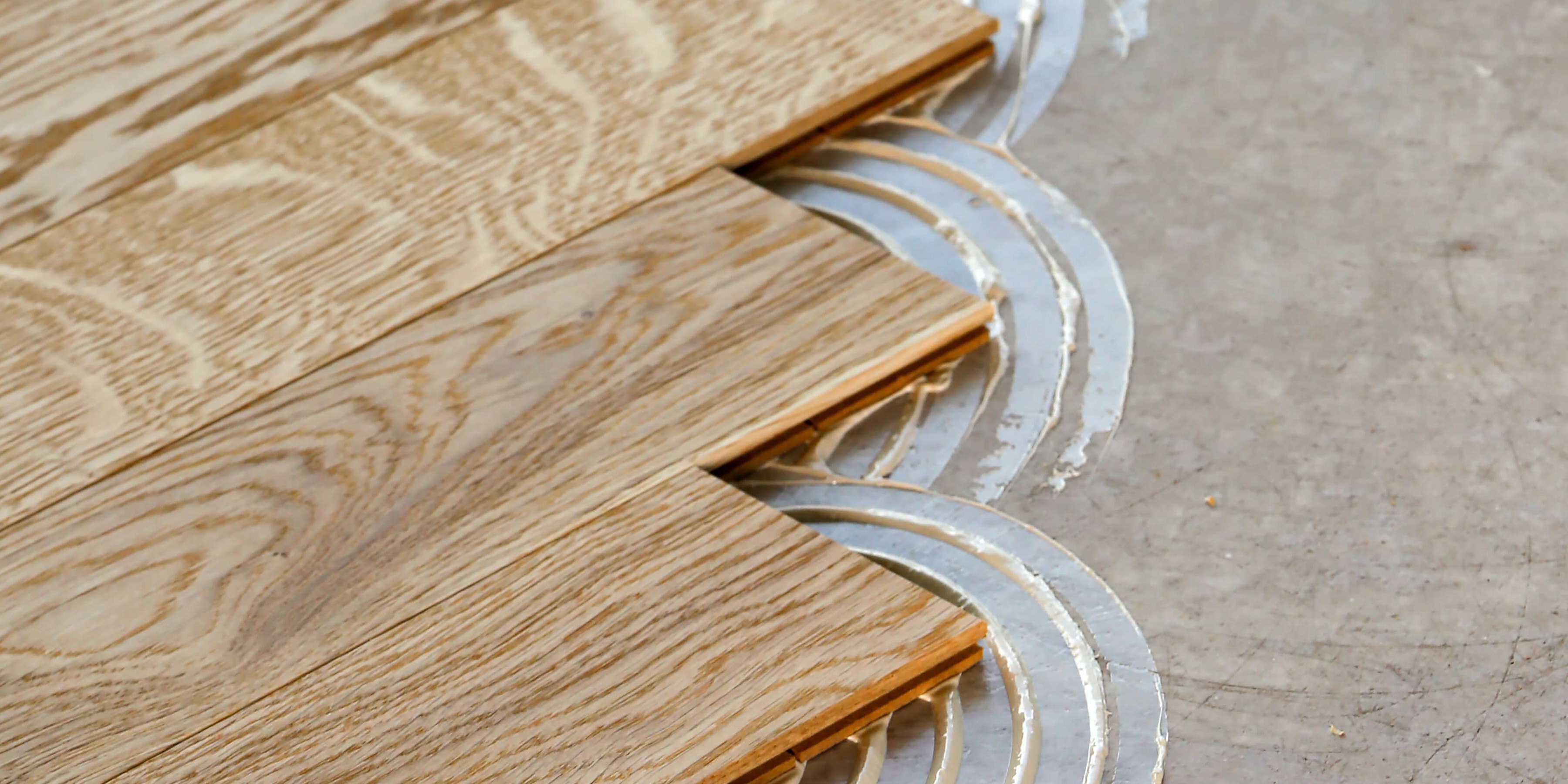Is engineered wood flooring a sustainable option?
Blog |

If you are looking for sustainable timber flooring, you’ve likely come across engineered wood. Deciding on a flooring product can be daunting, especially if you want a sustainable solution.
In this article, we explain the sustainability benefits of engineered wood flooring and compare it to other flooring products. We cover the manufacturing process, longevity, additives, and more.
Flooring products - are they sustainable?
The most common types of wood flooring are vinyl flooring, solid timber flooring, and engineered wood flooring. In terms of sustainability, we’ve summarised the key points to know about each below:
Vinyl flooring
In general, vinyl flooring is not considered to be sustainable because it is synthetic. Instead of real wood, vinyl or laminate flooring is made from fibreboard with a printed appliqué layer on top. These layers are laminated and coated with a strong resin, making them impossible to recycle at the end of their lifespan.
Solid wood flooring
Solid hardwood flooring is milled from one solid piece of wood, which requires a lot of natural resources. In its natural state, hardwood flooring does not produce any toxic emissions, but some sealants and coatings may release harmful chemicals. At the end of its lifespan, solid timber can be easily recycled.
Engineered timber flooring
Engineered wood flooring is one of the most sustainable flooring options available because it uses fewer natural resources, produces no toxic emissions, and is fully recyclable. Compared to solid timber, engineered wood floorboards are produced with a fraction of the amount of hardwood, instead being reinforced with a fast-growing core.
Sustainable wood flooring
When considering how sustainable a wood flooring product is, there are several factors to think about. Below, we’ve answered how each of these factors plays out for engineered wood flooring.
The manufacturing process
Engineered wood flooring is made of two parts – a veneer and a reinforced core backing. The veneer is the top layer and is made of authentic timber, usually oak. The reinforced backing is made with economical and fast-growing timber, like ply, hevea, or pine.
The veneer and backing are fixed together to form individual planks, thus achieving more strength than solid timber boards. When all the floorboards are made, they are sanded, stained, and sealed in the factory. This allows us to apply heavy-duty coatings that will protect the floor over its lifespan.
Natural resource used
Compared to solid timber flooring, engineered wood requires fewer trees to be cut down per square metre. Engineered wood flooring uses approximately one-third of solid hardwood compared to solid timber of the same dimensions. This is because only the wear layer/veneer is made of solid hardwood timber.
Sustainable forestry
Many engineered timber flooring products are made with wood sourced from sustainably managed forests. This helps to preserve natural forests and promote responsible forestry practices.
Toxic emissions
Our engineered wood flooring products are low in volatile organic compounds (VOC). This means they contain no added formaldehyde and won’t release any harmful chemicals into the air when installed. This improves indoor air quality and ensures a healthier home environment.
Longevity
Engineered wood flooring is coated to protect it from damage and moisture and, if glued down, an engineered wood floor covering has an impressively long lifespan. Depending on veneer thickness, an engineered wood floor can be re-sanded up to 5 times, giving it a lifespan of 30 to 50 years. This significantly reduces production, transportation, and disposal over time.
Recyclability
Engineered wood flooring can be recycled or repurposed once it has reached the end of its lifespan. Compared to most laminate flooring products, this reduces unnecessary landfill waste.
Accreditations
Always check if your flooring product is accredited by environmental authorities like the New Zealand Green Building Council (NZGBC), Forest Stewardship Council (FSC®), and the Programme for the Endorsement of Forest Certification (PEFC®).
To reduce our emissions, the NZGBC has adopted the Australian Green Star rating system. This combats the risk of greenwashing by highlighting the brands and suppliers that truly produce high-quality, sustainable products.
To obtain certification, a supplier must prove that they meet best practice sustainable design and build benchmarks. The certification process involves a robust independent assessment of the product and manufacturing process to ensure that it meets the criteria.
Forté - sustainable engineered wood flooring
At Forté, we’re passionate about preserving the environment and all it provides. In the face of climate change and deforestation, we know it’s our responsibility to make positive environmental progress. That’s why we’re committed to reducing our impact on the environment with our sustainable wood flooring.
We use fewer resources
Our engineered timber construction uses approximately one-third of the slow-growing hardwood resources compared to solid timber.
We use sustainably sourced resources
Our flooring is made with sustainably sourced timber that is FSC® or PEFC® certified. We also use FSC® certified and recyclable boxes to send our samples, print our catalogues on FSC® certified papers, and actively reduce our in-house paper and plastic usage.
Accountability and accreditation
We believe in accountability so don’t just take our word for it! To avoid the risk of greenwashing, our flooring products have Toitū Envirocare Carbonreduce certification, FSC® certification, and PEFC® certification.
Long-lasting
Our engineered wood flooring is designed to last decades in New Zealand climates. Not only is it robust, but it’s also designed for maximum colour retention over time. This way, you don’t need to spend excessive time and money on treatments or toxic coatings.
At Forté, we believe our engineered hardwood flooring offers the ideal combination of natural beauty, sustainability, and durability. For beautiful floors that last, contact us today. Or, if you’re looking for more ideas, specifications, and inspiration, download a free copy of our Buyer’s Guide.
Visit one of our Showrooms
If you have any queries about our products or need help with your project, we can provide you with expert advice. Visit one of our showrooms or book a consultation with our flooring experts today.



